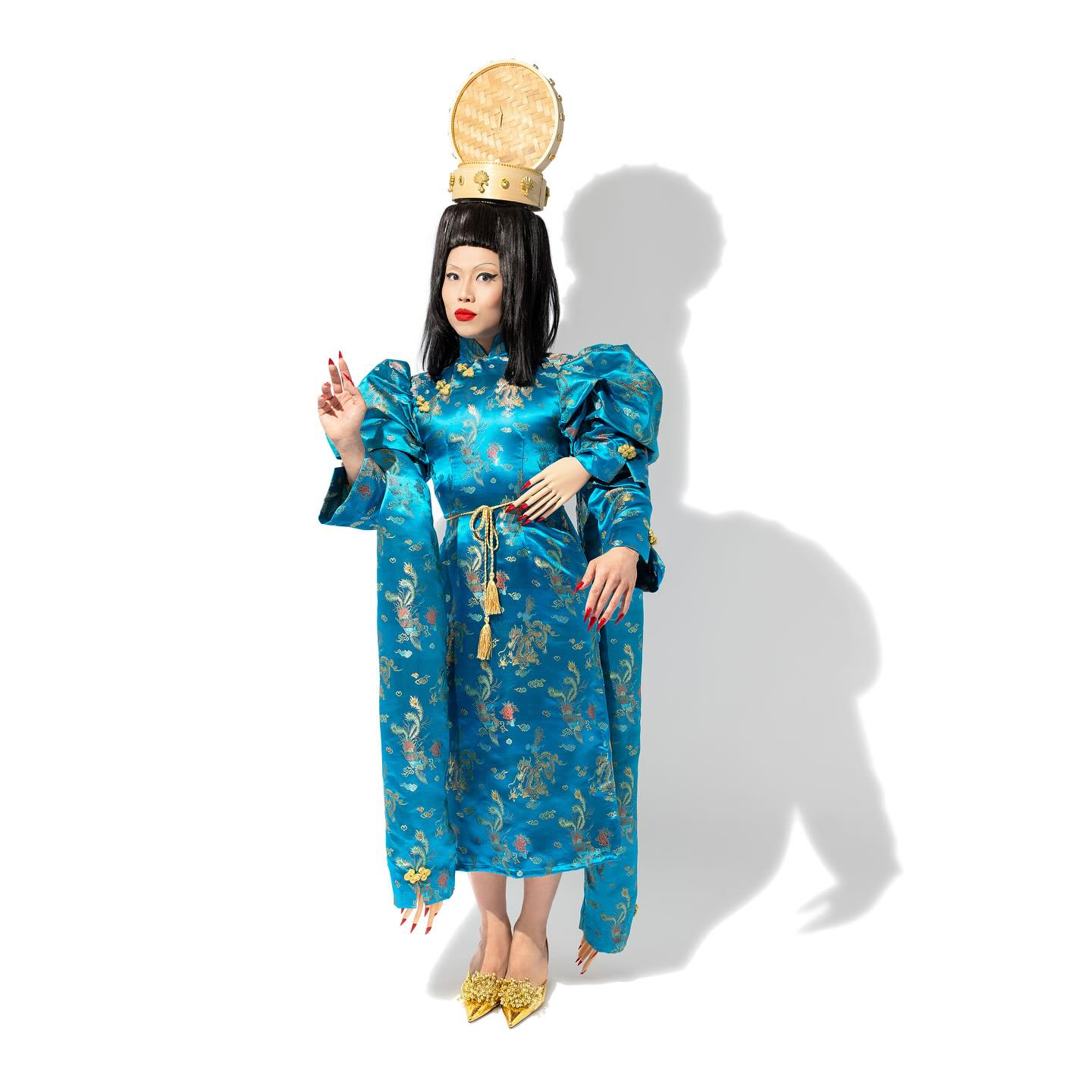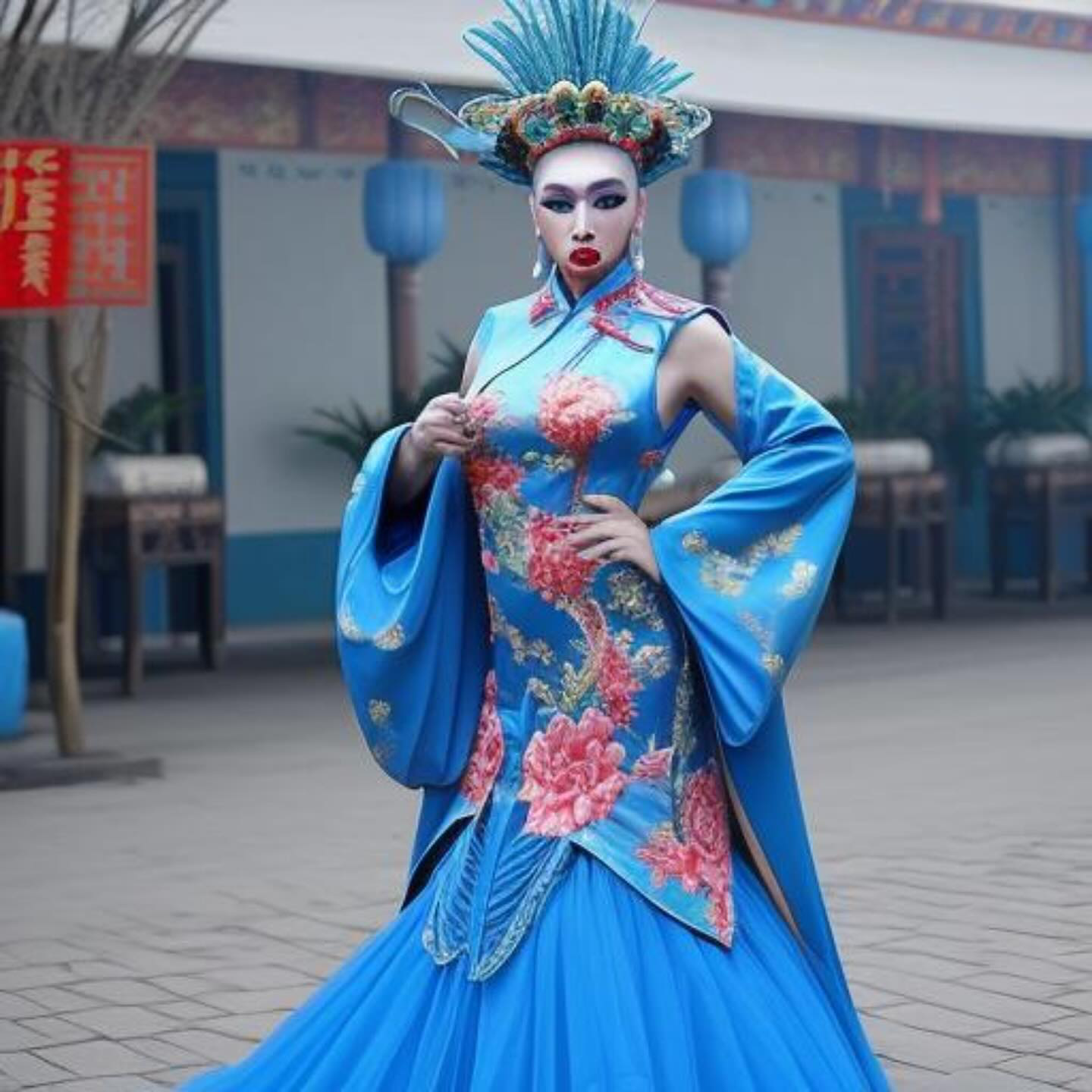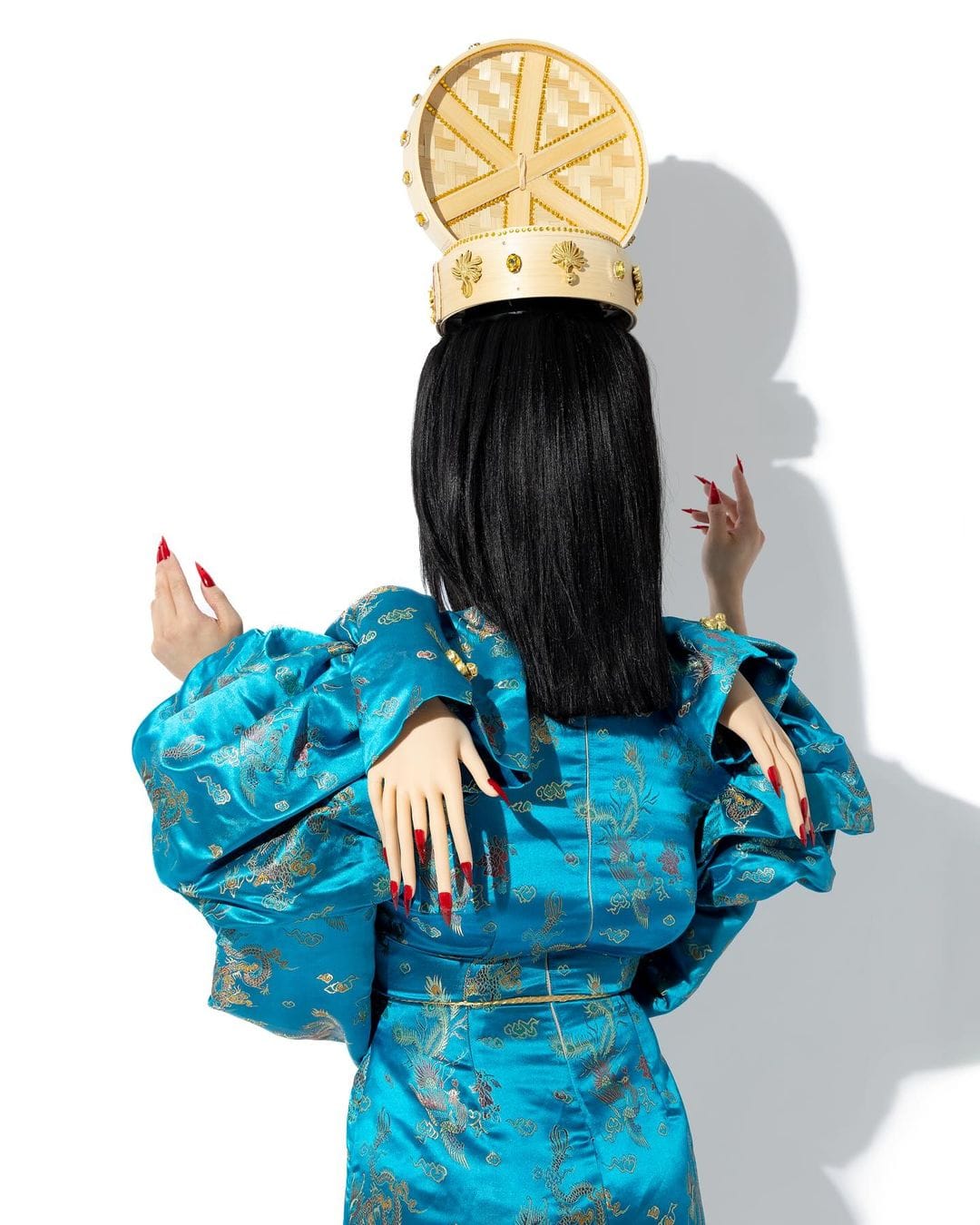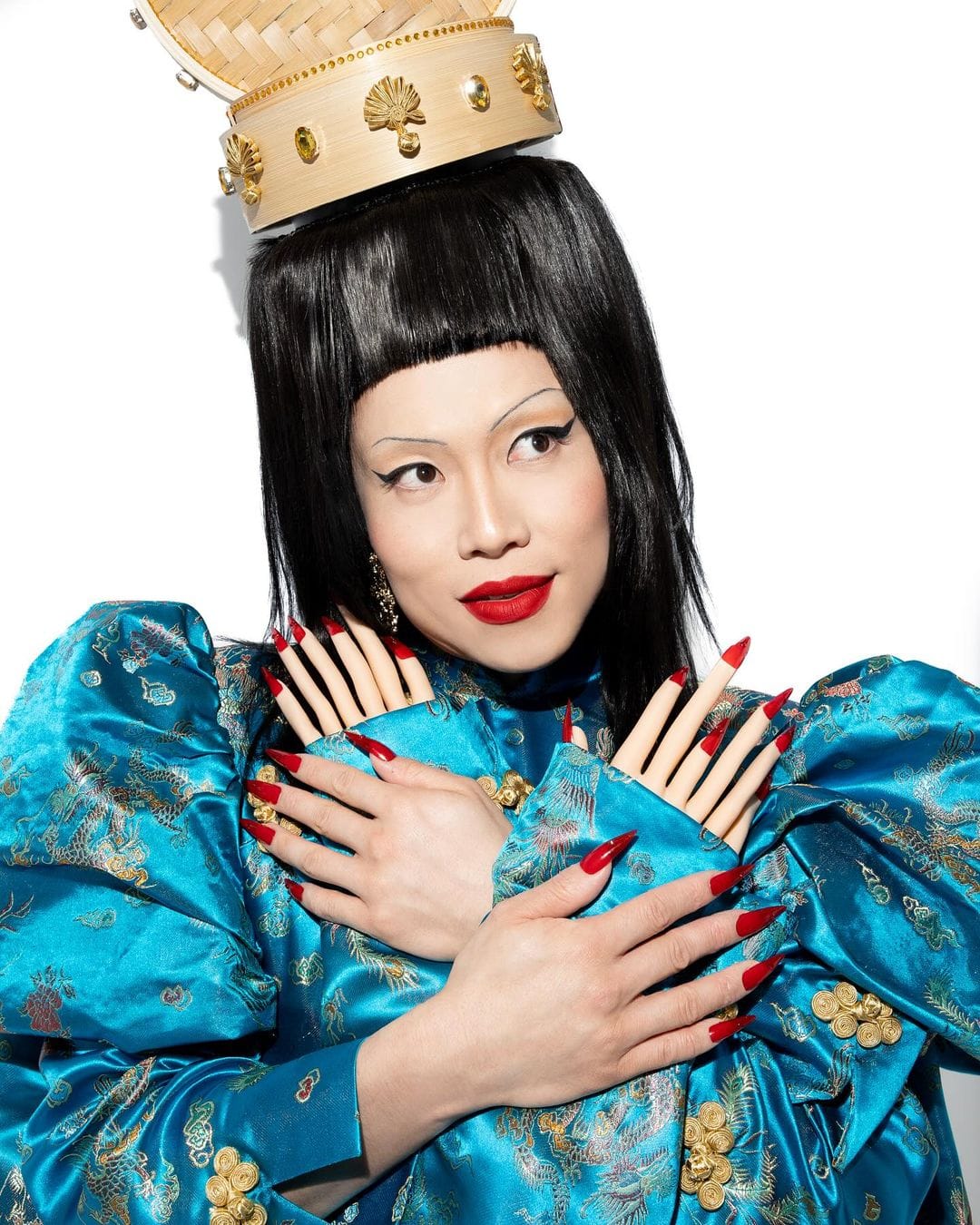On Canada’s Drag Race, drag queen Le Fil has created a look titled AI Gone Wong to reflect on how image generating Artificial Intelligence (AI) perceives cultural and gendered differences. The final look was made from image references garnered when they ran the prompt, “Hey AI, show me an androgynous Chinese drag artist” into an image generative AI. The results were a camp pastiche of different stereotypes that Le Fil translated into a blue qipao with accentuated slanted eyes, dim sum tray hats and one too many hands.

For Le Fil, the final look speaks at length about the need to include more representation and diversity into the image repository that AI models are learning from. “So it really got me thinking more about how we can design and reference our culture without it being didactic and obvious - food for AI thought,” concludes Le Fil. This is why AI Gone Wong by Le Fil is aligned with the United Nations Sustainable Development Goals of Gender Equality and Reduced Inequalities.

A late 2023 investigative piece by Washington Post journalists Nitasha Tiku, Kevin Schaul and Szu Yu Chen has confirmed Le Fil’s deduction. According to the article, despite the internet’s users being mostly of Chinese and Indian backgrounds, AI images cater to a mostly White and Western gaze. This is because many of the data sets used by conventional generative AI tools rely on “alt-texts,” which were originally made to describe the image to blind people. In reality, alt-texts have become notoriously unreliable—filled with offensive descriptions and unrelated terms intended to help images rank high in search engines and social media. In short, rage-bait, as depicted in AI Gone Wong, sells on the internet.

The article goes on to state that filtering and making changes to individual alt-texts will only solve a part of the problem. Sasha Luccioni, an AI repository research scientist, has also stated that another reason behind the phenomenon is the fact that most of the alt-texts processed by AI are in English, further catering to a primarily Western gaze. One solution would be to program AI to understand and engage with a variety of other languages in order to be able to engage with a wider audience and represent more lived experiences.

Le Fil’s drag look, AI Gone Wong, serves as a powerful commentary on the biases embedded in artificial intelligence, particularly in how AI perceives and represents cultural and gender diversity. By translating the stereotypical, reductive images generated by AI into a visually striking drag ensemble, Le Fil highlights the urgent need for greater diversity and representation in the datasets that AI systems are trained on.
This look challenges viewers to reconsider the narratives that AI perpetuates and highlights the importance of creating inclusive, accurate portrayals of marginalized communities. It urges broader conversations on how technology can either reinforce or dismantle existing biases. Through the performance, Le Fil not only critiques current AI practices but also advocates for a more equitable digital future.
Find out more about AI Gone Wong and other pieces by Le Fil on their website, www.lefil.co.uk, or their Instagram @iamlefil.
